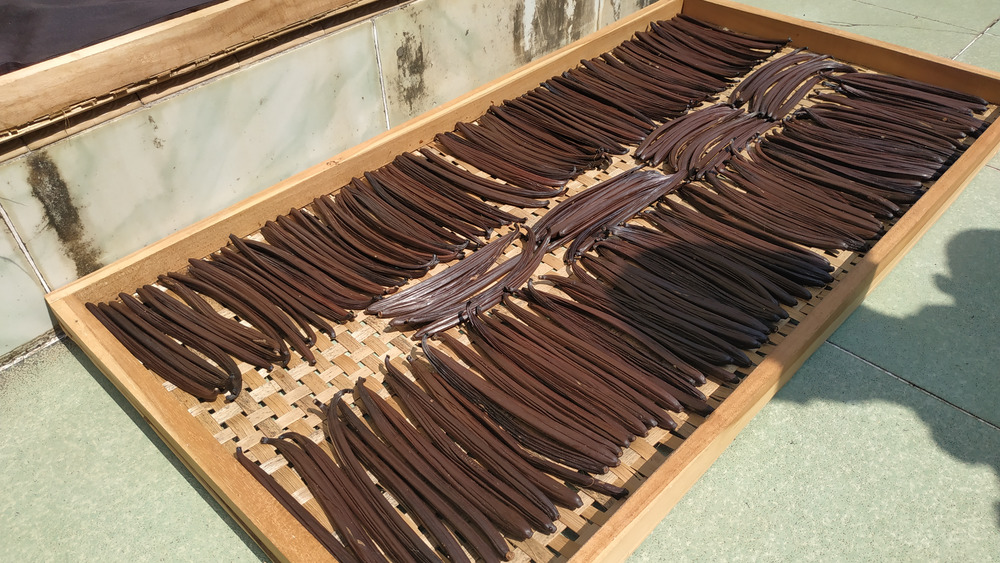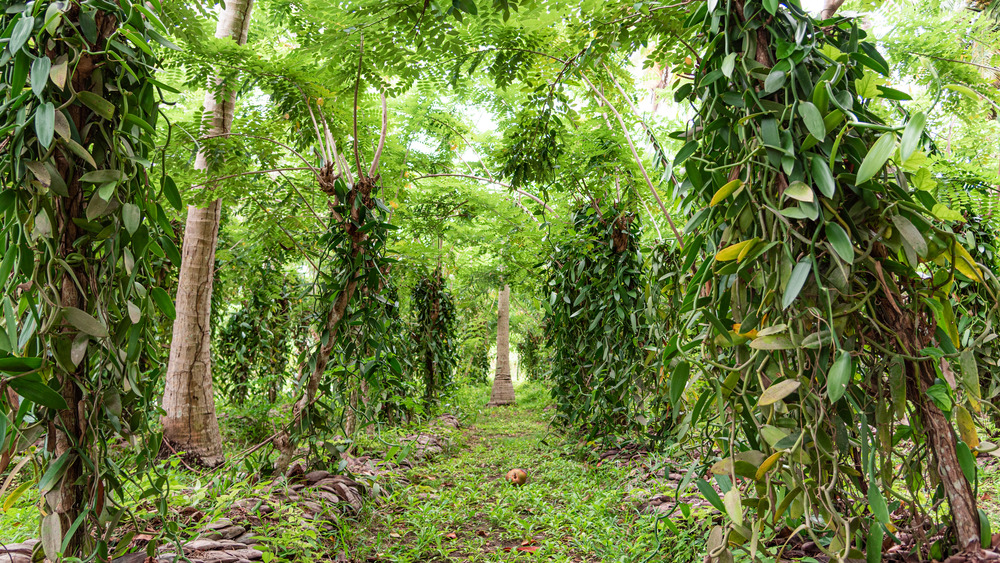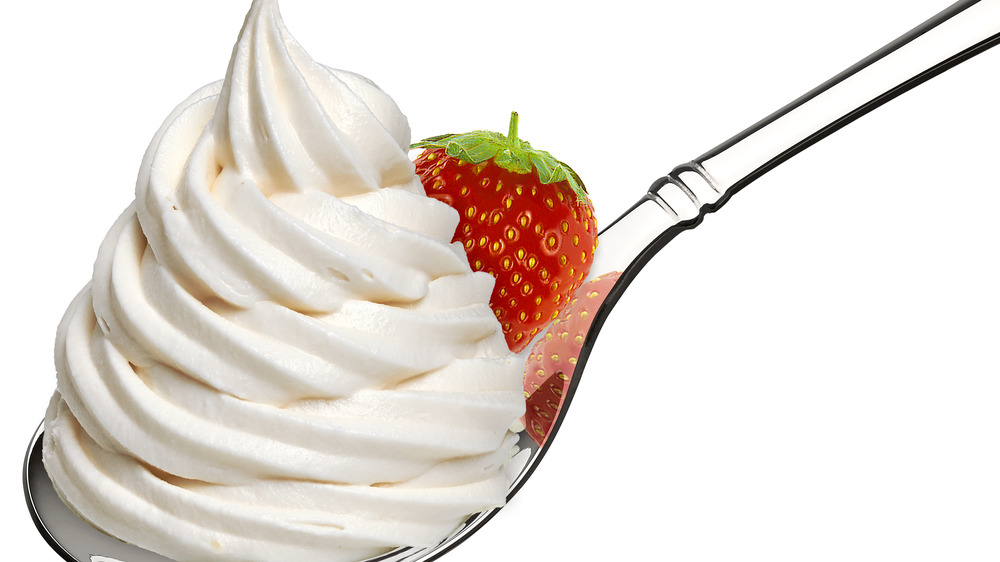The Untold Truth Of Vanilla
Vanilla has been considered precious for ages. In stories reportedly told among the Totonacs, the plant was born from the blood of a beheaded princess/priestess offered to a goddess in chastity and her lover by the princess/priestess's father according to Plant Scientist. So, the vanilla plant remained a secret to the Totonacs, according to Nielsen Massey's history of vanilla anyway — though an article in Springer suggests there were other sources of vanilla at the time.
In the 15th century, however, the Aztecs conquered the Totonacs and in doing so, "discovered" vanilla. As Thrillist describes, the Aztecs began taxing vanilla from the Totonacs to mix the spice with their cacao-based drink xocolatl. Then, Hernando Cortez arrived and "discovered" the vanilla-infused xocolatl.
So, the vanilla mixed xocolatl, which after various translations transformed into hot chocolate, made its way to Europe. National Geographic covers how after a century in which vanilla was consumed purely as an ingredient for chocolate, Queen Elizabeth I's apothecary, Hugh Morgan, found various uses for vanilla in chocolate-less sweetmeats. The popularity of these new flavors lasted long enough for Thomas Jefferson to grow excited over a Parisian vanilla ice cream a century later, the recipe of which he brought back to America.
After that, the popularity of vanilla exploded, despite the way we use the word "vanilla" to mean bland. In fact, as an article in Slate regales, it was vanilla's very popularity that has made it seem bland because of its ubiquity.
Sweating means for sweet production
The other reason many consider vanilla precious is that it is one of the most expensive spices in the world. In fact, as Luxury Insider reports, vanilla's $200 per pound price tag is only beaten by saffron's $5,000 one. The reason we don't pay that much for vanilla-flavored anything is because over 90 percent of vanilla goods are flavored with synthetically derived vanillin, the substance we associate with vanilla flavors. Rarely, do we taste real vanilla.
Smithsonian Magazine describes the extremely hands-on nature of vanilla's cultivation: "With thumb and forefinger, [the farmers] push the [the male and female parts of the vanilla flower] into each other to ensure pollination." This process was invented by Edmond Albius, a slave on the island of Réunion, after centuries of failed attempts to introduce vanilla to other ecosystems revealed that they needed the Mexican Melipona bee to pollinate properly.
After that, the signs of vanilla we recognize don't reveal themselves until they've been cut and dried, meaning recognizing when vanilla's ripe is another skill. Then, in addition to that, five to seven pounds off harvested vanilla would usually only result in one pound of processed vanilla.
The New York Times gives a final factor that explains the price of vanilla: crime. Talking to vanilla exporter Michel Lomone, they learned that "hundreds of pounds of vanilla have been stolen from his warehouses over the years." With high prices already commanded, the commonplace thievery around vanilla stocks pushes the remaining prices even higher.
The future of vanilla
As one may imagine, businesses would love to find a way to reduce the amount spent on vanilla, specifically by finding a cheaper process with which to produce this. Back in 2014, The Guardian was already reporting on how the spectre of synthetic vanilla haunted Madagascar, the world's vanilla capital. The focus of the piece is on companies' attempts to create sustainable vanilla production on the island, especially with climate change.
However, it's likely that vanilla farms all over may face impossible competition from synthetically created vanilla. Another 2014 article, this one written by Tom Philpott for Mother Jones, focuses on how a company called Evolva had managed to synthesize a yeast that replicates the vanillin found in vanilla beans: "thus [this product] will compete directly with the premium-priced natural vanilla market now owned by farmers in places like Madagascar and Mexico." Moreover, because it is derived from a yeast, Evolva's vanillin is technically natural — and so, will be marketed as such to the further detriment of the grown vanilla bean. So far, however, Evolva hasn't pushed its production further.
The broader importance of fermented vanillin is underlined by Scientific American's 2016 article "The Problem with Vanilla" — namely, as Carol McBride, U.S. vanilla category manager at Symrise, explains,"The amount of all the vanilla beans in the world is not sufficient to flavor everything that everyone wants to flavor with vanilla." Although success is so far lacking, the need for sustainable, large scale vanillin remains.


